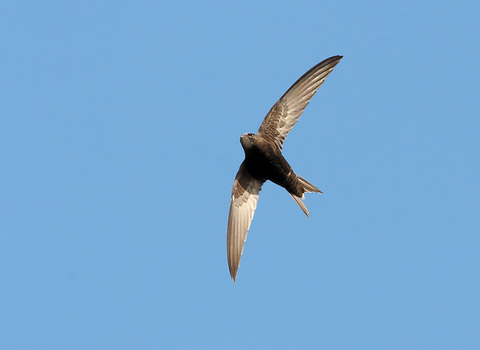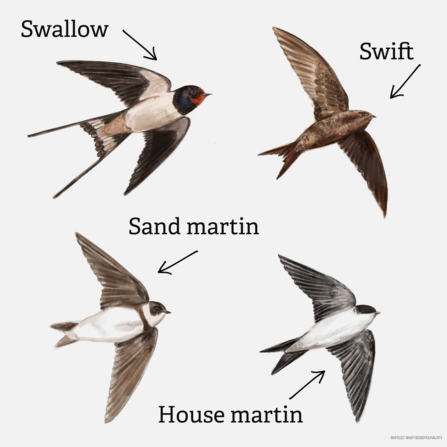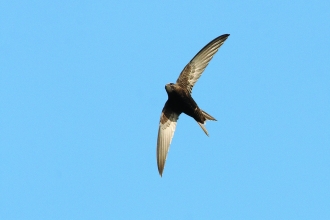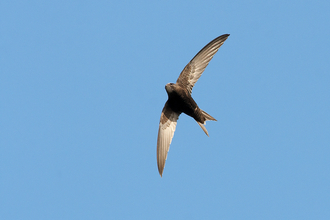These hardy travellers arrive from the end of March, a few weeks after the first sand martins have appeared above our river Ouse.
Swallows are joined, in turn, by the handsome black and white-rumped house martins, a familiar sight around housing estates, where their intricate mud nests are a constant source of interest for householders.
Last to come, slipping in unseen towards the end of April are the larger swifts. These aerial masters, with thin, sickle-shaped wings power over wetlands scooping up clouds of small insects until the weather warms sufficiently for them to think about nesting. Only then will they appear in the skies above our homes. By early summer, parties of swifts scream around the rooftops, a quintessential part of the English summer soundscape.
A remarkable journey
Swifts are incredible birds. What we might think of as ‘our’ swifts actually spend nine months of the year touring Africa, so really they are our guests for just a short part of the year. Crossing Europe rapidly, they head south over the mighty wastes of the Sahara into West Africa, before turning into the rising sun, winging their way to the southeast coast of Mozambique. By the turn of the year, they continue their odyssey, travelling back into West Africa. They make their way north in spring, arriving back here by May.






